Potrebujeme váš súhlas na využitie jednotlivých dát, aby sa vám okrem iného mohli ukazovať informácie týkajúce sa vašich záujmov. Súhlas udelíte kliknutím na tlačidlo „OK“.
ASTM E2472-12e1
Standard Test Method for Determination of Resistance to Stable Crack Extension under Low-Constraint Conditions (Includes all amendments And changes 12/19/2018).
Automaticky preložený názov:
Štandardná skúšobná metóda pre stanovenie odolnosti k stabilnému Crack rozšírenie podľa Low-obmedzenia podmienky
NORMA vydaná dňa 1.7.2012
Informácie o norme:
Označenie normy: ASTM E2472-12e1
Poznámka: NEPLATNÁ
Dátum vydania normy: 1.7.2012
Kód tovaru: NS-45385
Počet strán: 26
Približná hmotnosť: 78 g (0.17 libier)
Krajina: Americká technická norma
Kategória: Technické normy ASTM
Kategórie - podobné normy:
Anotácia textu normy ASTM E2472-12e1 :
Keywords:
crack-opening displacement (COD), crack-tip-opening angle, CTOA, crack-tip-opening displacement, CTOD, critical CTOA (&psi,c), &delta,5 resistance curve, ductile fracture, elastic-plastic fracture, fracture instability, low-constraint specimens, stable crack extension, ICS Number Code 77.040.10 (Mechanical testing of metals)
Doplňujúce informácie
| Significance and Use | ||||||||||||||||||||||
|
5.1 This test method characterizes a metallic material’s resistance to stable crack extension in terms of crack-tip-opening angle (CTOA), ψ and/or crack-opening displacement (COD), δ5 under the laboratory or application environment of interest. This method applies specifically to fatigue pre-cracked specimens that exhibit low constraint and that are tested under slowly increasing displacement. 5.2 When conducting fracture tests, the user must consider the influence that the loading rate and laboratory environment may have on the fracture parameters. The user should perform a literature review to determine if loading rate effects have been observed previously in the material at the specific temperature and environment being tested. The user should document specific information pertaining to their material, loading rates, temperature, and environment (relative humidity) for each test. 5.3 The results of this characterization include the determination of a critical, lower-limiting value, of CTOA (ψ c) or a resistance curve of δ5.4 The test specimens are the compact, C(T), and middle-crack-tension, M(T), specimens. 5.5 Materials that can be evaluated by this standard are not limited by strength, thickness, or toughness, if the crack-size-to-thickness (a/B) ratio or ligament-to-thickness (b/B) ratio are equal to or greater than 4, which ensures relatively low and similar global crack-front constraint for both the C(T) and M(T) specimens 5.6 The values of CTOA and COD (δ5.6.1 In research and development, CTOA (ψ5.6.2 For specifications of acceptance and manufacturing quality control of base materials. 5.6.3 For inspection and flaw assessment criteria, when used in conjunction with fracture mechanics analyses. Awareness of differences that may exist between laboratory test and field conditions is required to make proper flaw assessment. 5.6.4 The critical CTOA (ψ5.6.5 The δ5 parameter has been related to the J-integral by means of the Engineering Treatment Model (ETM) 5.6.6 The K-R curve method (Practice E561) is similar to the δ5-resistance curve, in that, the concept has been applied to both C(T) and M(T) specimens (under low-constraint conditions) and the K-R curve concept has been used successfully in industry (11). However, the δ5 parameter has been related to the J-integral and the parameter incorporates the material non-linear effects in its measurement. Comparisons have also been made among various fracture criteria on fracture of C(T), M(T) and a structurally configured crack configuration (12) that were made of several different materials (two aluminum alloys and a very ductile steel), and the K-R curve concept was found to have limited application, in comparison to the critical CTOAc (ψ c) concept. |
||||||||||||||||||||||
| 1. Scope | ||||||||||||||||||||||
|
1.1 This standard covers the determination of the resistance to stable crack extension in metallic materials in terms of the critical crack-tip-opening angle (CTOA), ψ1.2 Materials that are evaluated by this standard are not limited by strength, thickness, or toughness, if the crack-size-to-thickness (a/B) ratio and the ligament-to-thickness (b/B) ratio are greater than or equal to 4, which ensures relatively low and similar global crack-front constraint for both the C(T) and M(T) specimens 1.3 The values stated in SI units are to be regarded as standard. No other units of measurement are included in this standard. 1.4 This standard does not purport to address all of the safety concerns, if any, associated with its use. It is the responsibility of the user of this standard to establish appropriate safety and health practices and determine the applicability of regulatory limitations prior to use. |
||||||||||||||||||||||
| 2. Referenced Documents | ||||||||||||||||||||||
|
Podobné normy:
Historická
1.5.2013
Historická
1.5.2014
Historická
1.1.2012
Historická
1.7.2014
Historická
1.11.2012
Historická
1.7.2014
Odporúčame:
Aktualizácia zákonov
Chcete mať istotu o platnosti využívaných predpisov?
Ponúkame Vám riešenie, aby ste mohli používať stále platné (aktuálne) legislatívne predpisy
Chcete vedieť viac informácií ? Pozrite sa na túto stránku.


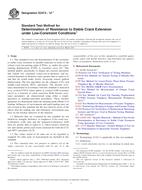
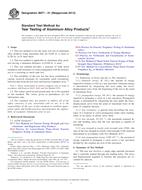 ASTM B871-01(2013)..
ASTM B871-01(2013)..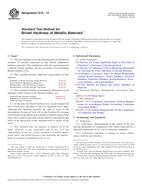 ASTM E10-14
ASTM E10-14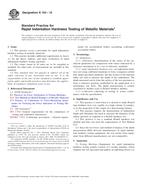 ASTM E103-12
ASTM E103-12 ASTM E110-14
ASTM E110-14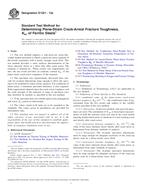 ASTM E1221-12a
ASTM E1221-12a ASTM E1304-97(2014)..
ASTM E1304-97(2014)..
 Cookies
Cookies
